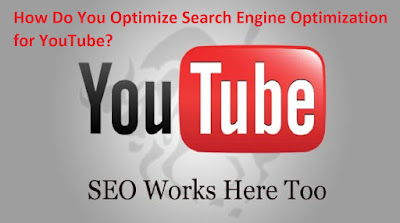How do you optimize search engine optimization for YouTube?
If you
are going to optimize search engine optimization for YouTube, of course, you
should use keywords in the video title, description, filename, and upload a
good custom thumbnail, but YouTube also relies heavily on engagement signals to
rank the video. This is why it is so important to aim for 10+ minutes, write a
script, and promote your video. Video also improves blog content and helps
attract links, share, and people spend more time on site. At here we have
presented how to optimize search engine optimization for YouTube and what you need to for this.
1. Select a video keyword in autocomplete
The best videos are keyword specific phrases that appear
on both YouTube and Google autocomplete. This way you can rank your videos in
both places and get more traffic. Start writing a keyword to YouTube and it
will complete the phrase or use the underline character to fill in the blanks
with more ideas. You can do this anywhere in the phrase.
2. Know the keyword competition
MozBar Chrome Extension installs the extension on Google
Chrome. Now while searching YouTube Google has your keyword, like this: site:
www.youtube.com your search term. If the top results have a high PA (page
authority), then the keyword is more competitive. Broad keywords are inherently
more competitive and require you to make a better video, so choose a specific
phrase from YouTube / Google to autocomplete and make a better video than the
top results.
4. How to Make Your Video?
Your Keyword: Saying verbally that
your keyword is like keyword density for a video for some time. Say it
naturally, don't just say it to say it. It is also good to include partial
matches.
Length is the ability: This applies to both
video and content on your site. Longer videos are at a higher level because
people can find everything they are looking for, especially tutorials and
reviews. People will spend more time watching your video and you will probably
get more engaged. There is no correct length, but try to make a video for at
least 10 minutes, you will see better results.
HD Quality: You can use your phone,
but a good HD video camera makes a big difference. If you are recording your
computer, make sure you check the settings for optimal video + audio. Edit all
unnecessary pauses and be brief. I am very unimpressed about this and have
noticed a huge difference in the busyness of my videos.
Use the keyword in the filename: Before uploading
your video, label the video file as your keyword. If you have already uploaded
the video, unfortunately, there is no way to change it.
Card: Cards are small buttons. These may link to related
videos, a related website, elections, donations, or any other YouTube channel.
They are mobile-friendly which you can add to YouTube's video manager.
Write a descriptive, keyword-rich title: A good title has 2
things your keyword, and a catchy title. Google usually displays the first
50-60 characters, so try to stay within that range. You do not have to use an
exact match to your keywords, but each word must be present at least in the
video title.
Timestamp: lets viewers
navigate to sections of the video so that they can find what they are looking
for, which also improves engagement with your video. This is particularly
useful for long videos.
Link: Google follows the link to determine the relevance
of the video. Add some useful links to your other videos, blog articles or
helpful resources.




Comments
Post a Comment